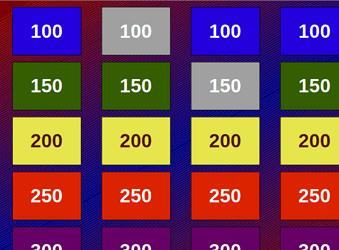I’m planning to make a Jeopardy-style Impress template to use for game nights, a student org, etc, and one of the really key functionalities I’d like is to be able to click on a certain slide I’m on (perhaps a specific object, like a “return to board” text box) and then return to the original board slide, and change the color of the text box I’d originally clicked to get to the slide I was on. I’m not familiar with how Macros work, but I figure that’s the route I have to go through. What’s an effective way to complete this behavior? In incredibly simplistic terms, I figure this is the general logic I’d like to go through:
when (click on TextBox1 on SlideTopic1Points500):
change BoardSlide.Topic1Points500Text to gray
goto to BoardSlide
Any help would be greatly appreciated!

 )
)


 Offhand, though, do you know if they’re supported in the Flatpak version of LibreOffice? All the tutorials for making a Python macro require I install a package from
Offhand, though, do you know if they’re supported in the Flatpak version of LibreOffice? All the tutorials for making a Python macro require I install a package from  Looks like I’ll have to learn LibreOffice Basic…
Looks like I’ll have to learn LibreOffice Basic…